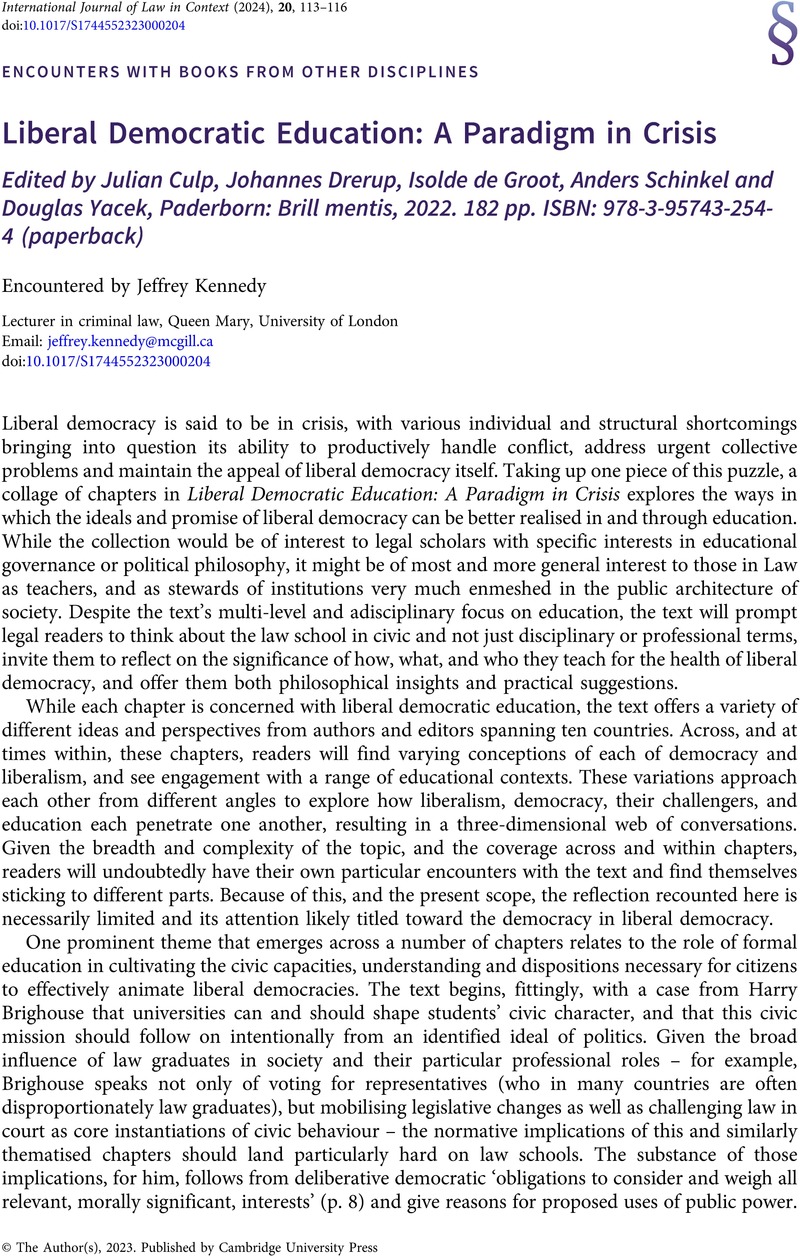No CrossRef data available.
Article contents
Liberal Democratic Education: A Paradigm in Crisis Edited by Julian Culp, Johannes Drerup, Isolde de Groot, Anders Schinkel and Douglas Yacek, Paderborn: Brill mentis, 2022. 182 pp. ISBN: 978-3-95743-254-4 (paperback)
Review products
Liberal Democratic Education: A Paradigm in Crisis Edited by Julian Culp, Johannes Drerup, Isolde de Groot, Anders Schinkel and Douglas Yacek, Paderborn: Brill mentis, 2022. 182 pp. ISBN: 978-3-95743-254-4 (paperback)
Published online by Cambridge University Press: 25 August 2023
Abstract
An abstract is not available for this content so a preview has been provided. Please use the Get access link above for information on how to access this content.

Information
- Type
- Encounters with Books from Other Disciplines
- Information
- International Journal of Law in Context , Volume 20 , Special Issue 1: Law, Migration and Vulnerability: From the Margins to the Centre , March 2024 , pp. 113 - 116
- Copyright
- © The Author(s), 2023. Published by Cambridge University Press
References
Berger, B (2018) What Humility Isn’t: Responsibility and the Judicial Role. In Moore, M and Jutras, D (eds) Canada’s Chief Justice: Beverly McLachlin’s Legacy of Law and Leadership. Canada: LexisNexis.Google Scholar
Gutmann, A (1993) Can Virtue Be Taught to Lawyers? Stanford Law Review 45, 1759.CrossRefGoogle Scholar
Menkel-Meadow, C (2005) The Lawyer’s Role in Deliberative Democracy. Nevada Law Journal 5, 347.Google Scholar
Nussbaum, MC (2003) Cultivating Humanity in Legal Education. University of Chicago Law Review 70, 265.CrossRefGoogle Scholar
Shaffer, TJ, Longo, NV, Manosevitch, I and Thomas, MS (eds) (2017) Deliberative Pedagogy: Teaching and Learning for Democratic Engagement. Michigan State University Press.Google Scholar
Stevens, K (2023) Humility as a Necessary Virtue in Common-Law Decision Making. Jurisprudence.CrossRefGoogle Scholar

